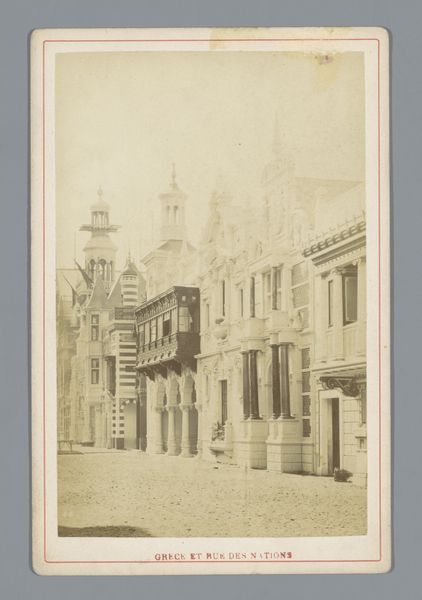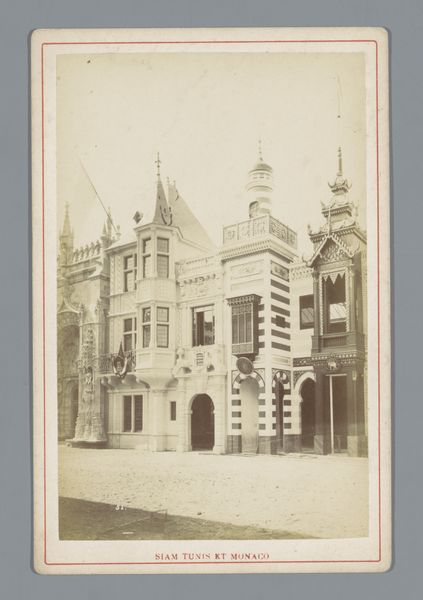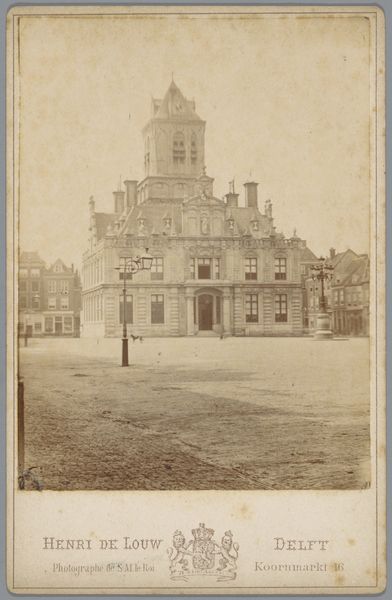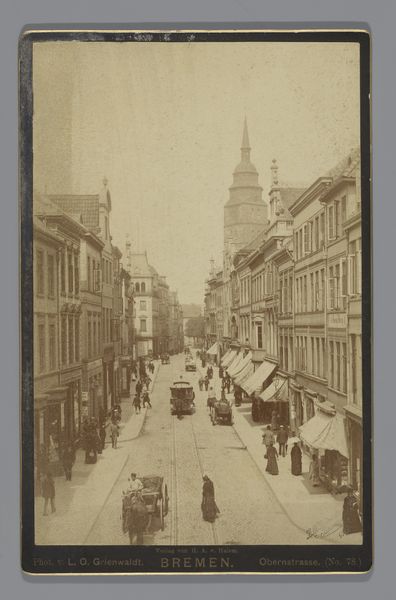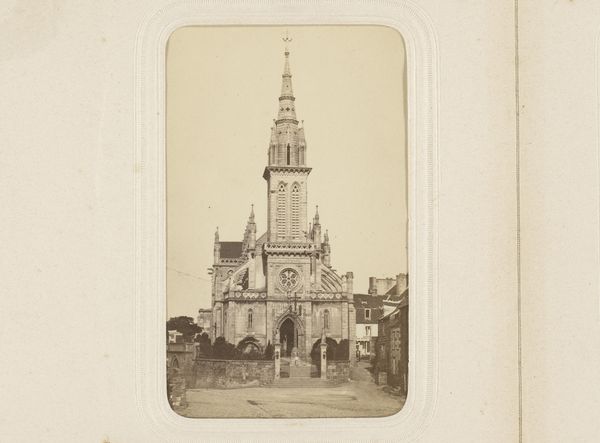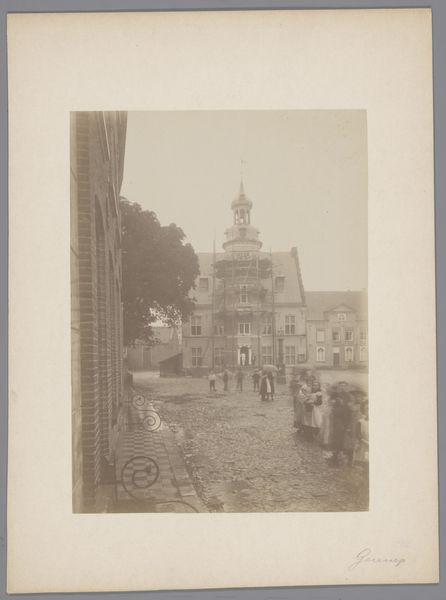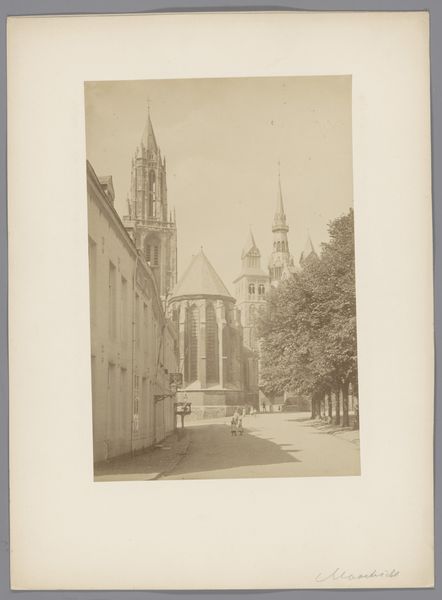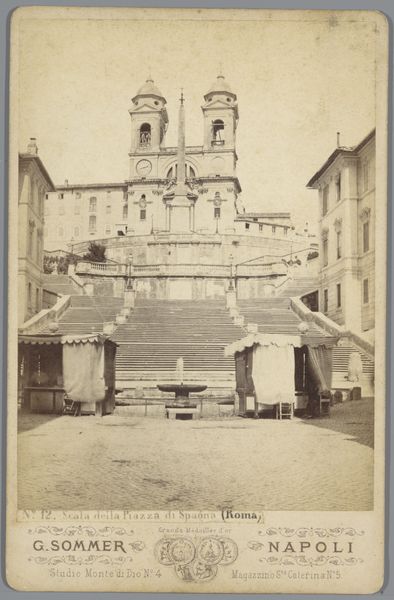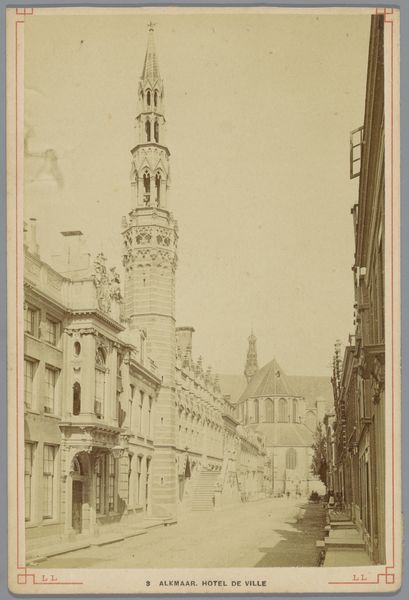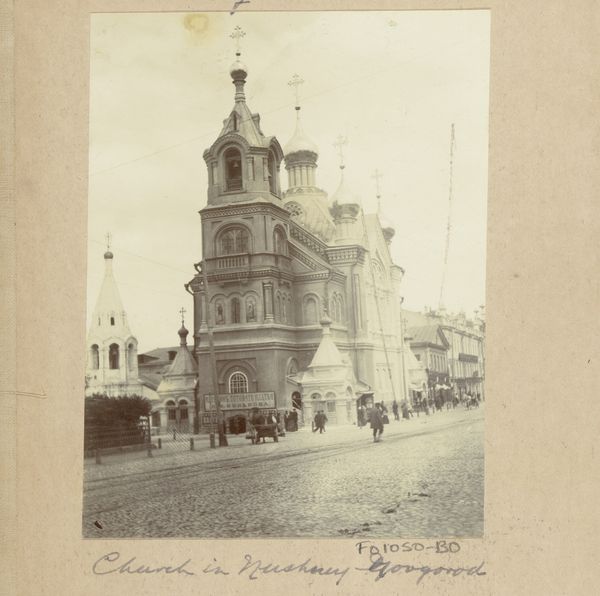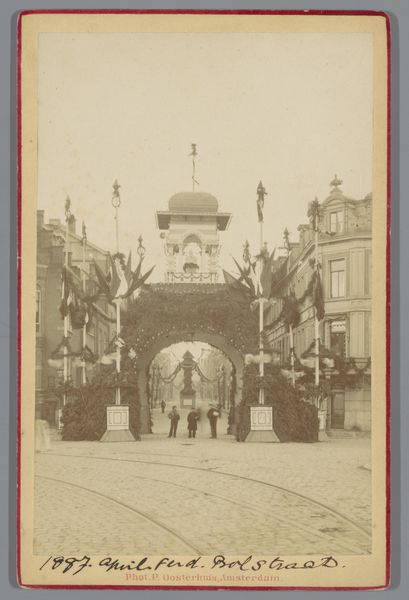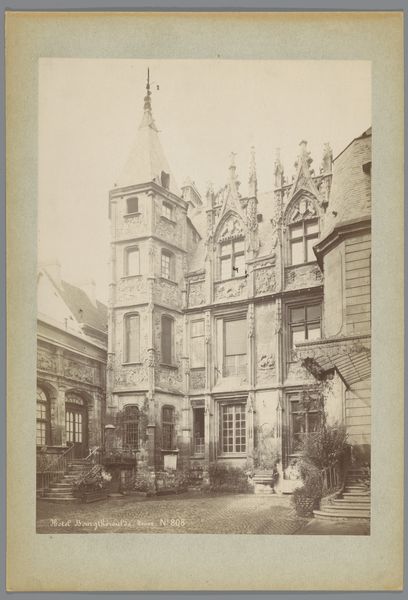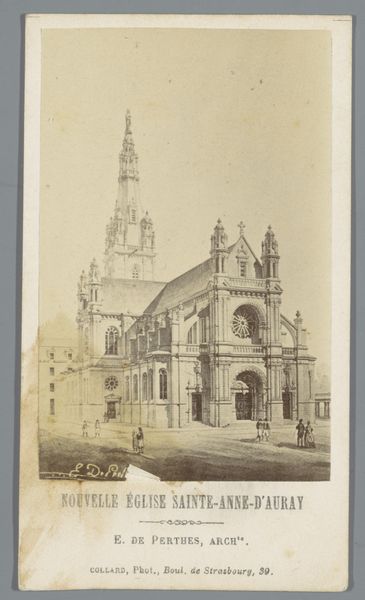
Gezicht op het Midden- en Zuid-Amerikaanse deel van de Wereldtentoonstelling van 1878 in Parijs Possibly 1878
0:00
0:00
print, photography, albumen-print
# print
#
photography
#
orientalism
#
cityscape
#
albumen-print
Dimensions: height 165 mm, width 108 mm
Copyright: Rijks Museum: Open Domain
Curator: Let's explore this albumen print, "Gezicht op het Midden- en Zuid-Amerikaanse deel van de Wereldtentoonstelling van 1878 in Parijs," possibly taken in that very year by Adolphe Block, currently residing at the Rijksmuseum. It offers a view of the Central and South American section of the Exposition. Editor: My first impression is of a staged theatrical set; the architecture is trying so hard, isn’t it? So elaborate, yet also kind of…sepia-toned melancholy. It seems almost as if this section of the Exposition grounds might already be slightly derelict. Curator: That sense of forced grandeur speaks volumes, actually. The World's Fair was designed to showcase progress and industrial advancement but this view onto the Latin American pavilions, it is laden with symbols that are far more intricate. Note the pseudo-colonial architectural elements: the attempt to evoke a sense of exoticism. What memories and assumptions was this structure designed to evoke in visitors from other colonial empires? Editor: Well, from a materialist perspective, consider the sheer effort. The physical building itself, even a temporary structure, required a supply chain—lumber, ironwork, glass. And all of that to represent nations ripe for investment. Labor would have been brought in from afar. The photograph flattens all this into an "Orientalist" pastiche. The texture suggests its being made of cheaper stuff too – this probably isn't marble. Curator: Precisely! This photographic print embodies the cultural gaze. Block captures more than just buildings; he's documenting a constructed narrative. What we read as "melancholy" might be the residue of inherent tensions, the disparity between facade and reality, progress and exploitation. The architectural design evokes a history that's about to become a market! Editor: Yes, and look at how quickly these kinds of spaces tend to disintegrate as well! A celebration of industry is reduced to what it is -- building materials that inevitably collapse. Now that's melancholy! The scale of photographic technology allowed for the broad distribution of colonial ambition. These prints circulated in homes and offices -- feeding the imperialist mindset of the period. The consumption of such imagery encouraged, even necessitated, exploitation. Curator: Indeed, this image is far from passive documentation. It reveals the World’s Fair for what it really was: a nexus of competing colonial projects. A powerful image. Editor: Definitely an eye-opener that exposes many more stories.
Comments
No comments
Be the first to comment and join the conversation on the ultimate creative platform.
